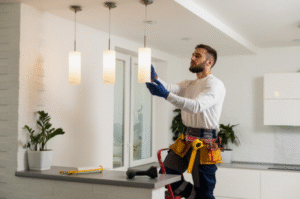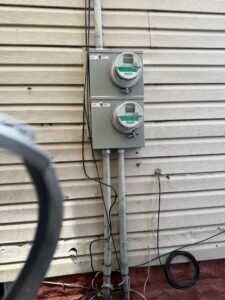Rewiring Old Homes: Why It’s Essential for Safety and Efficiency
Are you living in a house that’s seen decades of life? Older homes are beautiful, full of character, and built to last. But here’s the thing: many of these charming properties come with outdated electrical systems. If you’re not paying attention, this could be a ticking time bomb for safety and efficiency. That’s why rewiring old homes is crucial. Let’s dig into why this is so important and what you should know before starting the process.
Why Should You Consider Rewiring Old Homes?
1. Safety Comes First
The top reason to think about rewiring old homes is safety. Homes built more than 30 or 40 years ago often have wiring that wasn’t designed for modern electrical loads. Can you imagine your grandparents’ home powering today’s appliances and tech gadgets without hiccups? Probably not. Outdated wiring can overheat, leading to sparks and even fires. Rewiring old homes ensures that your home meets today’s safety standards, making it a secure place for you and your family.
2. Handle Modern Electrical Needs
Back in the day, homes weren’t filled with flat-screen TVs, computers, or smart devices. But now, every household relies on these. If you’ve noticed flickering lights when you plug in your laptop or tripping circuit breakers when using a hairdryer, it’s time to look into Manhattan EV charger installation. Modern wiring is built to handle higher electrical demands, providing a seamless flow of electricity throughout your home.
Signs Your Old Home Needs Rewiring
So, how do you know if your house needs this upgrade? Here are some signs:
1. Frequent Power Surges and Tripping Breakers
Does your circuit breaker trip more often than you’d like? Or do your lights dim when the microwave runs? These are clear signs that your wiring can’t handle the load. Rewiring old homes can fix these issues and improve the overall performance of your electrical system.
2. Outlets That Are Warm or Discolored
If your outlets feel warm to the touch or you see discoloration, that’s a major red flag. It means that there’s excessive heat building up in the wires behind your walls. By rewiring old homes, you eliminate this danger, reducing the risk of electrical fires.
3. Two-Pronged Outlets
Many older homes still have two-pronged outlets that lack grounding. Not only is this inconvenient, but it’s also a safety hazard. Proper grounding is essential for protecting both you and your appliances. best whole house generator installers includes updating these outdated outlets to safer, three-pronged ones.
The Process of Rewiring an Old Home
Now that we know why rewiring old homes is necessary, let’s talk about the process.
1. Inspection and Assessment
The first step is a thorough inspection. A qualified electrician will evaluate your current wiring, check for signs of wear and tear, and identify outdated components. This assessment helps them create a clear plan for the rewiring project.
2. Creating a Rewiring Plan
The electrician will map out a plan tailored to your home’s needs. They’ll consider factors like the age of the wiring, the number of circuits, and the overall layout of your home. This phase is essential for understanding the scope of the project and getting a cost estimate.
3. The Actual Rewiring
When the work begins, sections of the house are rewired one at a time to minimize disruption. The electrician replaces old wires, installs new circuits, and upgrades outlets and switches to modern standards. During this phase, you might experience some inconvenience, but the result is worth it.
4. Final Inspection and Testing
Once the rewiring of your old home is complete, it’s time for a final inspection. This ensures everything is up to code and working perfectly. The electrician will test the system, confirm safety standards are met, and provide you with a certification.
Benefits of Rewiring Your Old Home
1. Enhanced Safety
The most significant benefit is peace of mind. With electric car charger installation cost, you eliminate the risk of electrical hazards. You can sleep better knowing your family is safe.
2. Improved Energy Efficiency
Modern wiring is designed to work with current energy standards. This means your home will use electricity more efficiently, which can even lead to lower utility bills. Isn’t that a win-win?
3. Increased Property Value
If you’re considering selling your home, rewiring old homes can boost your property’s value. Potential buyers love knowing that major updates like wiring have already been taken care of.
Choosing the Right Professional for the Job
When it comes to rewiring old homes, hiring the right professional is crucial. Make sure to choose a licensed electrician with experience in older properties. Ask for references, read reviews, and don’t be afraid to ask questions about their approach and timeline.
Conclusion
Owning an older home is like holding a piece of history, but it comes with responsibilities, especially when it comes to safety and efficiency. Rewiring old homes might seem like a significant project, but it’s one that pays off in countless ways—from enhanced safety to a more comfortable, modern living environment. Don’t wait until a minor electrical issue becomes a major problem. Invest in the future of your home by rewiring it with the help of trusted experts.



